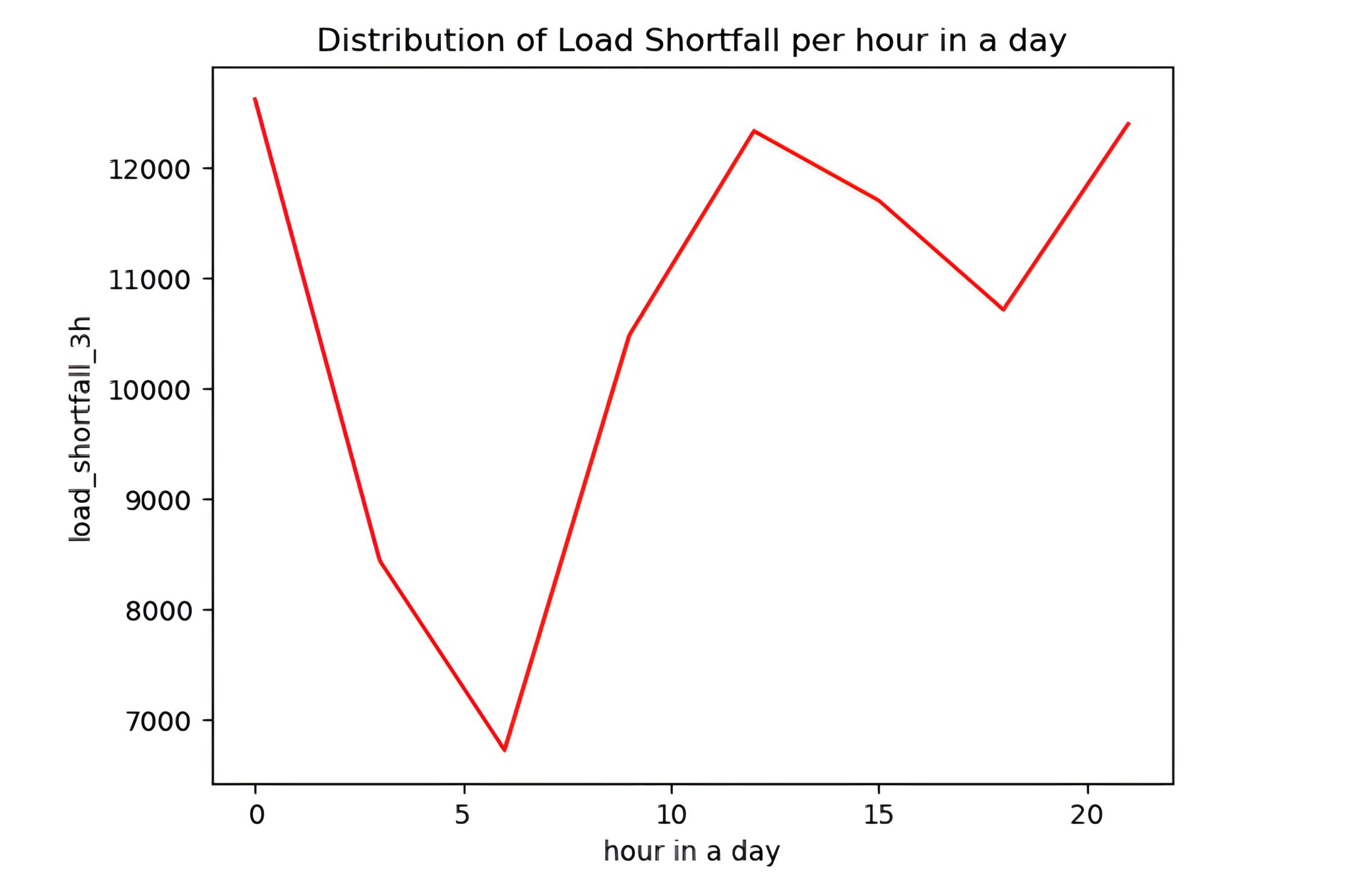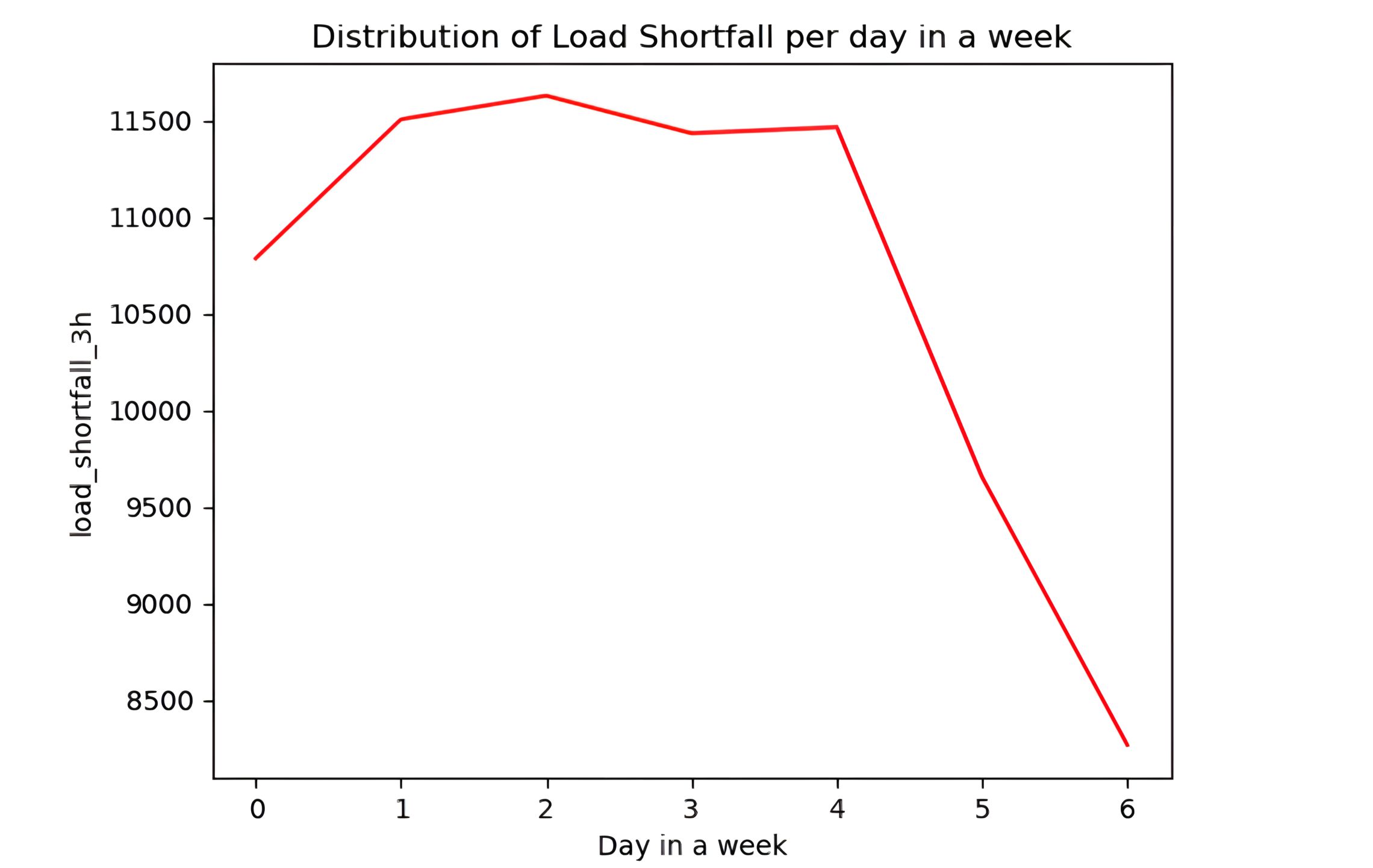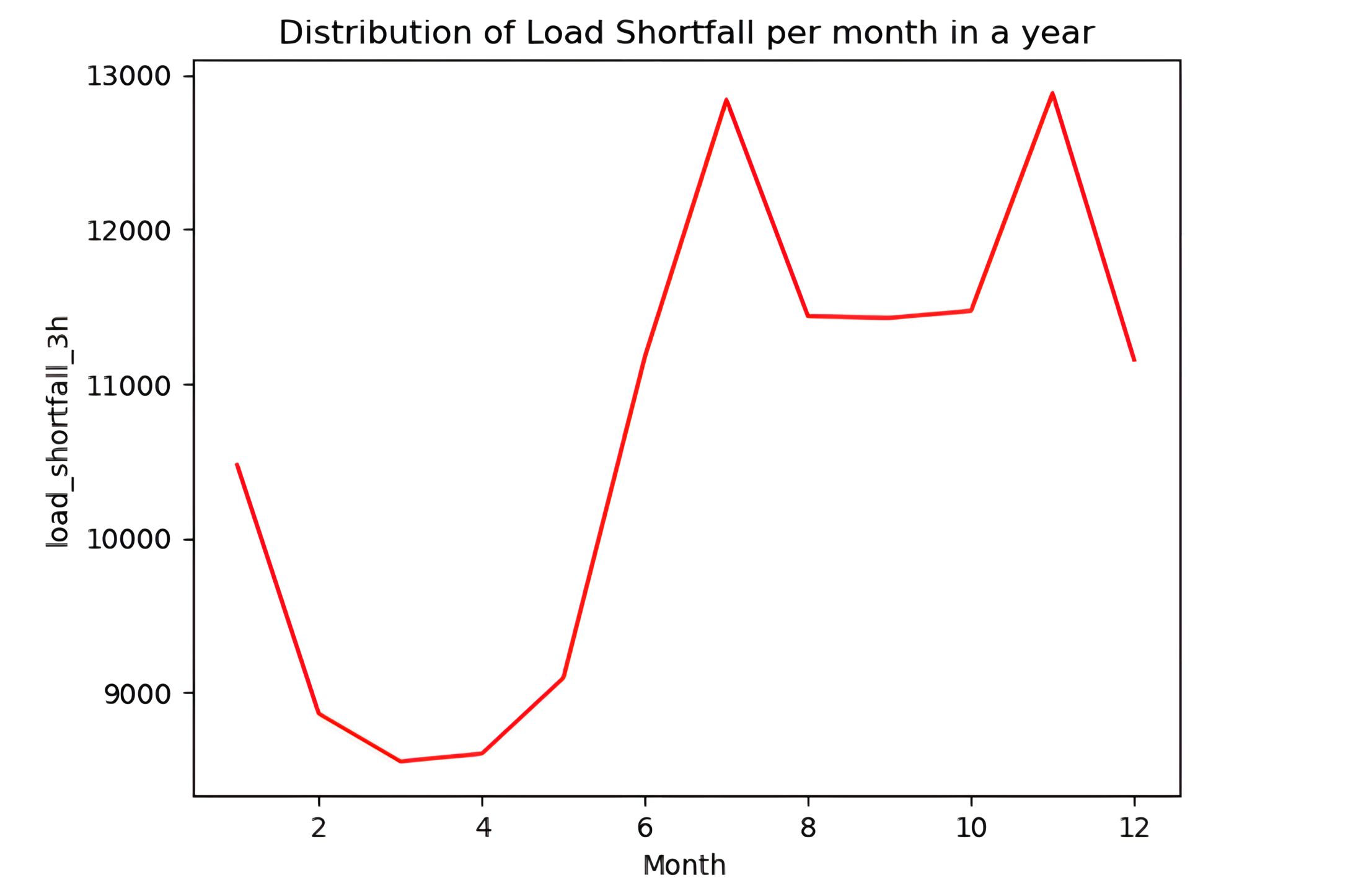Energy-Transformation

Introduction
In this project, I had the privilege of leading a dynamic team in a project of national significance – ensuring a sustainable electricity supply in Spain. Our mission was to bridge the gap between renewable and fossil fuel energy sources, using data-driven insights. Through thorough analysis and modeling, our team achieved the top position on the leaderboard, showcasing the power of data science in shaping a sustainable energy future. Our project emphasized the real-world impact of data-driven decisions and underscored the critical role of renewables in Spain’s energy landscape. It was a journey of both professional growth and meaningful change.
Objective
Our primary objective was to build a model to predict the daily shortfall of energy generated from fossil fuels and renewable sources in Spain, utilizing various weather features like pressure, wind speed, and humidity, etc. This model aims to assist the government of Spain in making informed decisions regarding the expansion of renewable energy resource infrastructure investments by providing insights into the country’s energy generation trends and patterns.
My Role
My contributions to this project include:
- Leading a dynamic team to bridge the gap between renewable and fossil fuel energy sources using data-driven insights.
- Overseeing in-depth data analysis and working closely with modeling, which led our team to achieve the top position on the leaderboard.
- Guiding the project to both professional growth and meaningful change.
Project Highlights
We conducted comprehensive analyses to uncover load shortfall patterns, identify causes, and select features for our machine learning model. Employing a strategic data analysis approach, we examined daily, weekly, monthly, seasonal, and yearly trends, revealing a significant daily shortfall.
Here are some project highlights and snapshots that showcase our work in action:
-
Daily Shortfall Analysis - As in the image below, it is shown that there is a heavy load shortfall between 9 and 21 hours, coinciding with peak working hours. This highlights the potential of renewable energy to sustainably meet power demands during these critical periods:

-
Weekly Shortfall Analysis - From the image below, it is evident that load shortfalls are more pronounced on weekdays as opposed to weekends, indicating a substantial difference in energy consumption patterns between workdays and leisure days. This observation underscores the need for tailored energy solutions to meet the varying demands of both scenarios, with the potential for renewable energy sources to play a significant role in addressing these discrepancies and ensuring a consistent power supply across all days of the week:

-
Monthly/Seasonal Shortfall Analysis - As seen in the image below, there’s higher frequency of shortfalls in the second half of the year compared to the first half, indicating a potential correlation with seasonal variations, particularly during the summer and winter months. This observation suggests that energy demand during the second half of the year may be influenced by factors such as increased cooling needs in the summer and heightened outdoor activities, leading to greater usage of outdoor equipment, lighting, and entertainment systems:

Modeling
We trained, validated, and tested different models to select the best-performing one for deployment. The models included Linear Regression, Decision Trees, Light GBM, K-Nearest Neighbours, Random Forest and Support Vector Machine. The best-performing model was Light GBM, so we chose it for deployment.
Recommendations
From the insights we uncovered and the performace of our model which performs the best in predicting energy shortfall, we recommended that renewable energy sources should be adopted due to the following advantages:
-
Environmental Sustainability: Renewable energy sources, such as wind and solar power, have a significantly lower environmental impact compared to fossil fuels. They reduce greenhouse gas emissions and help combat climate change.
-
Cost-Efficiency: Over time, renewable energy systems can lead to reduced energy costs, making it a cost-effective choice in the long run.
-
Energy Independence: Relying on renewable energy sources reduces dependence on fossil fuel imports, increasing energy security.
-
Job Creation: The renewable energy sector generates jobs and contributes to economic growth.
-
Reliability: Renewable energy sources are more reliable in the long term, as they are not subject to the volatility of fossil fuel markets.
-
Sustainable Growth: Promoting renewable energy aligns with global efforts to achieve sustainable development goals and create a more sustainable and resilient energy future.
-
Energy Access: Expanding the use of renewable energy can provide energy access to remote and underserved areas.
Adopting renewable energy sources offers not only a solution to power shortages but also a pathway to a more sustainable and environmentally friendly energy landscape.
Conclusion
This project not only highlighted the importance of sustainable energy transformation but also demonstrated how data science can drive meaningful change. It was a privilege to lead a team in shaping the future of Spain’s energy landscape through data-driven decisions.